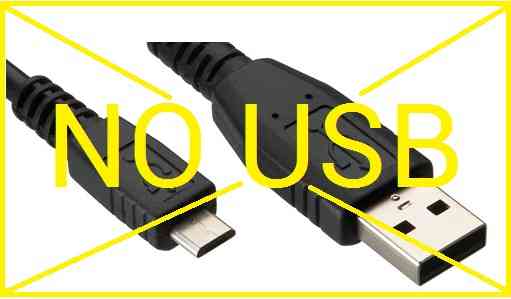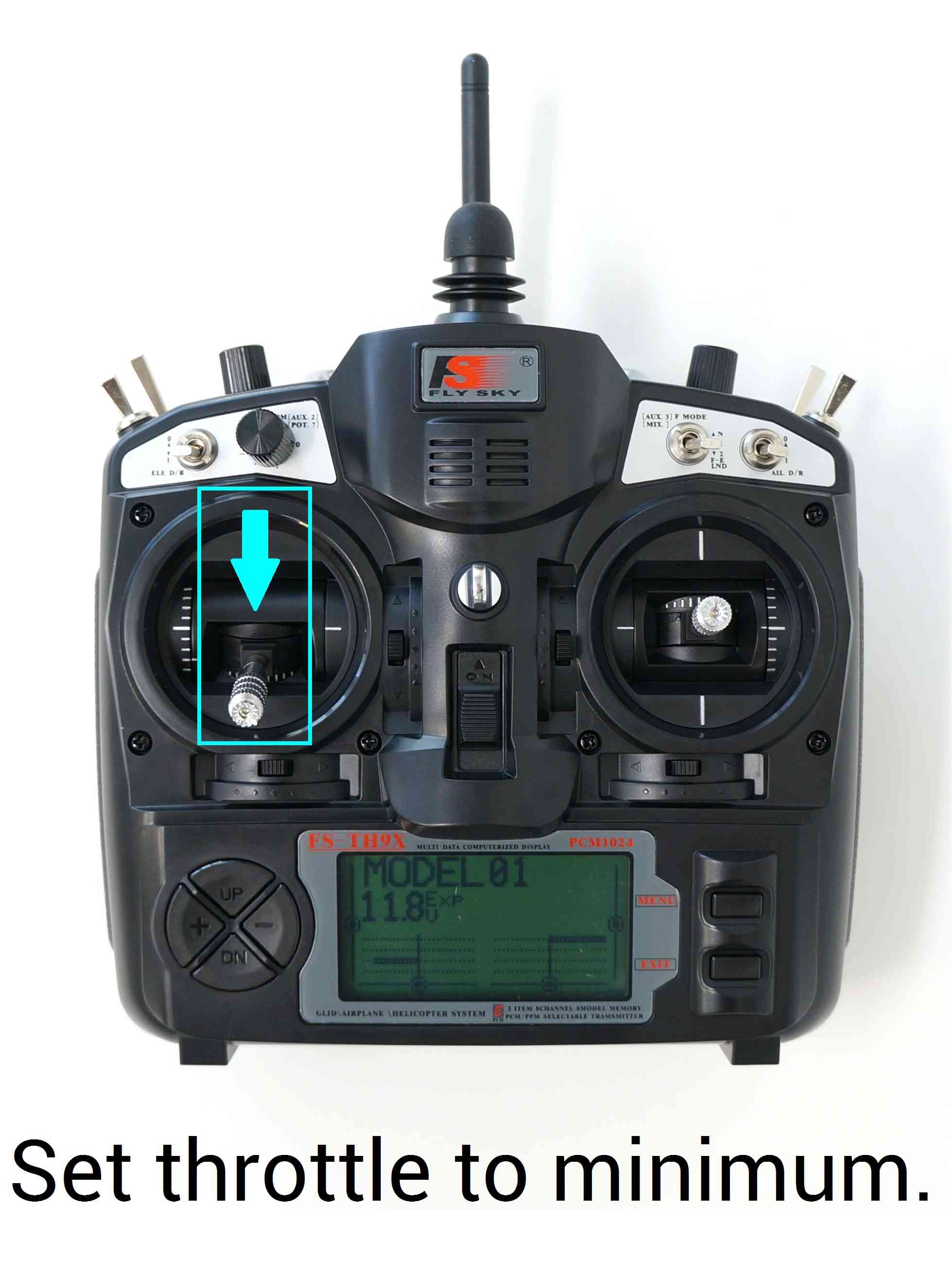به نام خدا
توی این پست قصد داریم اسپید کنترل ها رو کالیبره کنیم. ملخ ها را جدا کنید!!!
ابتدا باید برنامه زیر رو کپی و روی بردتون آپلود کنید.
///////////////////////////////////////////////////////////////////////////////////////
//Terms of use
///////////////////////////////////////////////////////////////////////////////////////
//THE SOFTWARE IS PROVIDED "AS IS", WITHOUT WARRANTY OF ANY KIND, EXPRESS OR
//IMPLIED, INCLUDING BUT NOT LIMITED TO THE WARRANTIES OF MERCHANTABILITY,
//FITNESS FOR A PARTICULAR PURPOSE AND NONINFRINGEMENT. IN NO EVENT SHALL THE
//AUTHORS OR COPYRIGHT HOLDERS BE LIABLE FOR ANY CLAIM, DAMAGES OR OTHER
//LIABILITY, WHETHER IN AN ACTION OF CONTRACT, TORT OR OTHERWISE, ARISING FROM,
//OUT OF OR IN CONNECTION WITH THE SOFTWARE OR THE USE OR OTHER DEALINGS IN
//THE SOFTWARE.
//
///////////////////////////////////////////////////////////////////////////////////////
//Safety note
///////////////////////////////////////////////////////////////////////////////////////
//Always remove the propellers and stay away from the motors unless you
//are 100% certain of what you are doing.
///////////////////////////////////////////////////////////////////////////////////////
#include <EEPROM.h> //Include the EEPROM.h library so we can store information onto the EEPROM
//Declaring global variables
byte last_channel_1, last_channel_2, last_channel_3, last_channel_4;
byte eeprom_data[36];
int receiver_input_channel_1, receiver_input_channel_2, receiver_input_channel_3, receiver_input_channel_4;
int counter_channel_1, counter_channel_2, counter_channel_3, counter_channel_4, start;
int receiver_input[5];
//int temp;
unsigned long timer_channel_1, timer_channel_2, timer_channel_3, timer_channel_4, esc_timer, esc_loop_timer;
unsigned long zero_timer, timer_1, timer_2, timer_3, timer_4, current_time;
//Setup routine
void setup(){
//Arduino Uno pins default to inputs, so they don't need to be explicitly declared as inputs
DDRD |= B11110000; //Configure digital poort 4, 5, 6 and 7 as output
DDRB |= B00010000; //Configure digital poort 12 as output
PCICR |= (1 << PCIE0); // set PCIE0 to enable PCMSK0 scan
PCMSK0 |= (1 << PCINT0); // set PCINT0 (digital input 8) to trigger an interrupt on state change
PCMSK0 |= (1 << PCINT1); // set PCINT1 (digital input 9)to trigger an interrupt on state change
PCMSK0 |= (1 << PCINT2); // set PCINT2 (digital input 10)to trigger an interrupt on state change
PCMSK0 |= (1 << PCINT3); // set PCINT3 (digital input 11)to trigger an interrupt on state change
//Read EEPROM for fast access data
for(start = 0; start <= 35; start++)eeprom_data[start] = EEPROM.read(start);
//Check the EEPROM signature to make sure that the setup program is executed
while(eeprom_data[33] != 'J' || eeprom_data[34] != 'M' || eeprom_data[35] != 'B'){
delay(500);
digitalWrite(12, !digitalRead(12)); //Change the led status to indicate error.
}
wait_for_receiver(); ///Wait until the receiver is active.
zero_timer = micros(); //Set the zero_timer for the first loop.
}
//Main program loop
void loop(){
receiver_input_channel_3 = convert_receiver_channel(3); //Convert the actual receiver signals for throttle to the standard 1000 - 2000us
while(zero_timer + 4000 > micros()); //Start the pulse after 4000 micro seconds.
zero_timer = micros(); //Reset the zero timer.
PORTD |= B11110000; //Set port 4, 5, 6 and 7 high at once
timer_channel_1 = receiver_input_channel_3 + zero_timer; //Calculate the time when digital port 4 is set low
timer_channel_2 = receiver_input_channel_3 + zero_timer; //Calculate the time when digital port 5 is set low
timer_channel_3 = receiver_input_channel_3 + zero_timer; //Calculate the time when digital port 6 is set low
timer_channel_4 = receiver_input_channel_3 + zero_timer; //Calculate the time when digital port 7 is set low
while(PORTD >= 16){ //Execute the loop until digital port 4 to 7 is low
esc_loop_timer = micros(); //Check the current time
if(timer_channel_1 <= esc_loop_timer)PORTD &= B11101111; //When the delay time is expired, digital port 4 is set low
if(timer_channel_2 <= esc_loop_timer)PORTD &= B11011111; //When the delay time is expired, digital port 5 is set low
if(timer_channel_3 <= esc_loop_timer)PORTD &= B10111111; //When the delay time is expired, digital port 6 is set low
if(timer_channel_4 <= esc_loop_timer)PORTD &= B01111111; //When the delay time is expired, digital port 7 is set low
}
}
//This routine is called every time input 8, 9, 10 or 11 changed state
ISR(PCINT0_vect){
current_time = micros();
//Channel 1=========================================
if(PINB & B00000001){ //Is input 8 high?
if(last_channel_1 == 0){ //Input 8 changed from 0 to 1
last_channel_1 = 1; //Remember current input state
timer_1 = current_time; //Set timer_1 to current_time
}
}
else if(last_channel_1 == 1){ //Input 8 is not high and changed from 1 to 0
last_channel_1 = 0; //Remember current input state
receiver_input[1] = current_time - timer_1; //Channel 1 is current_time - timer_1
}
//Channel 2=========================================
if(PINB & B00000010 ){ //Is input 9 high?
if(last_channel_2 == 0){ //Input 9 changed from 0 to 1
last_channel_2 = 1; //Remember current input state
timer_2 = current_time; //Set timer_2 to current_time
}
}
else if(last_channel_2 == 1){ //Input 9 is not high and changed from 1 to 0
last_channel_2 = 0; //Remember current input state
receiver_input[2] = current_time - timer_2; //Channel 2 is current_time - timer_2
}
//Channel 3=========================================
if(PINB & B00000100 ){ //Is input 10 high?
if(last_channel_3 == 0){ //Input 10 changed from 0 to 1
last_channel_3 = 1; //Remember current input state
timer_3 = current_time; //Set timer_3 to current_time
}
}
else if(last_channel_3 == 1){ //Input 10 is not high and changed from 1 to 0
last_channel_3 = 0; //Remember current input state
receiver_input[3] = current_time - timer_3; //Channel 3 is current_time - timer_3
}
//Channel 4=========================================
if(PINB & B00001000 ){ //Is input 11 high?
if(last_channel_4 == 0){ //Input 11 changed from 0 to 1
last_channel_4 = 1; //Remember current input state
timer_4 = current_time; //Set timer_4 to current_time
}
}
else if(last_channel_4 == 1){ //Input 11 is not high and changed from 1 to 0
last_channel_4 = 0; //Remember current input state
receiver_input[4] = current_time - timer_4; //Channel 4 is current_time - timer_4
}
}
//Checck if the receiver values are valid within 10 seconds
void wait_for_receiver(){
byte zero = 0; //Set all bits in the variable zero to 0
while(zero < 15){ //Stay in this loop until the 4 lowest bits are set
if(receiver_input[1] < 2100 && receiver_input[1] > 900)zero |= 0b00000001; //Set bit 0 if the receiver pulse 1 is within the 900 - 2100 range
if(receiver_input[2] < 2100 && receiver_input[2] > 900)zero |= 0b00000010; //Set bit 1 if the receiver pulse 2 is within the 900 - 2100 range
if(receiver_input[3] < 2100 && receiver_input[3] > 900)zero |= 0b00000100; //Set bit 2 if the receiver pulse 3 is within the 900 - 2100 range
if(receiver_input[4] < 2100 && receiver_input[4] > 900)zero |= 0b00001000; //Set bit 3 if the receiver pulse 4 is within the 900 - 2100 range
delay(500); //Wait 500 milliseconds
}
}
//This part converts the actual receiver signals to a standardized 1000 – ۱۵۰۰ – ۲۰۰۰ microsecond value.
//The stored data in the EEPROM is used.
int convert_receiver_channel(byte function){
byte channel, reverse; //First we declare some local variables
int low, center, high, actual;
int difference;
channel = eeprom_data[function + 23] & 0b00000111; //What channel corresponds with the specific function
if(eeprom_data[function + 23] & 0b10000000)reverse = 1; //Reverse channel when most significant bit is set
else reverse = 0; //If the most significant is not set there is no reverse
actual = receiver_input[channel]; //Read the actual receiver value for the corresponding function
low = (eeprom_data[channel * 2 + 15] << 8) | eeprom_data[channel * 2 + 14]; //Store the low value for the specific receiver input channel
center = (eeprom_data[channel * 2 - 1] << 8) | eeprom_data[channel * 2 - 2]; //Store the center value for the specific receiver input channel
high = (eeprom_data[channel * 2 + 7] << 8) | eeprom_data[channel * 2 + 6]; //Store the high value for the specific receiver input channel
if(actual < center){ //The actual receiver value is lower than the center value
if(actual < low)actual = low; //Limit the lowest value to the value that was detected during setup
difference = ((long)(center - actual) * (long)500) / (center - low); //Calculate and scale the actual value to a 1000 - 2000us value
if(reverse == 1)return 1500 + difference; //If the channel is reversed
else return 1500 - difference; //If the channel is not reversed
}
else if(actual > center){ //The actual receiver value is higher than the center value
if(actual > high)actual = high; //Limit the lowest value to the value that was detected during setup
difference = ((long)(actual - center) * (long)500) / (high - center); //Calculate and scale the actual value to a 1000 - 2000us value
if(reverse == 1)return 1500 - difference; //If the channel is reversed
else return 1500 + difference; //If the channel is not reversed
}
else return 1500;
}
بعد از این که برنامه رو آپلود کردین کابل USB رو جدا کنید. رادیو کنترل را روشن کنید و تراتل را در بالاترین قسمت قرار دهید.
و سپس باتری Li-Po (لیتیوم پلیمر) رو به بردتون وصل کنید. ابتدا موتور ها ۲ تا بوق میزنند و کمی صبر کنید و سپس تراتل رو به حداقل مقدار خودش برسونید
بعد منتظر ۴ بوق موتور ها باشین. وقتی بوق ها تموم شد تراتل رو به آرامی بالا ببرید. هر چهار موتور در یک زمان با سرعت یکسان راه اندازی میشن. این یعنی اسپید کنترل ماکزیمم و مینیمم پالس ها رو از سوی فلایت کنترل درافت کرده… تا این مرحله اسپید کنترل و جایرو ی ما کالیبره شدن. تو پست بعدی برنامه ی اصلی رو براتون قرار میدم.






سلام
اموزش چهارم باز نمیشه برای من
سلام. پست ها ایرادی ندارن…
سلام برنامه جلسه ۴ بدون ارور ولی جلسه ۵ ارور میده.
سلام من دیگه نمیدونم چیکار باید بکنم که برنامه اپ بشه
سلام توی برنامه ب جای >>یا>> یه سری حروف نا مربوط هست که باعث ایجاد error میشه.دستورات برنامه ایراد دارد.
سلام. وقتی این برنامرو اپلود میکنم این ارور مییاد.Arduino: 1.6.12 (Windows 7), Board: “Arduino/Genuino Uno”
C:\Users\Mohsen\AppData\Local\Temp\arduino_modified_sketch_755577\sketch_jul14a.ino: In function ‘void setup()’:
sketch_jul14a:26: error: ‘startt’ was not declared in this scope
for(start = 0; start Preferences.
با سلام
ضمن تشکر از توجه شما، این ارور مربوط به کدها میباشد، لطفا هنگام کپى کردم کدها از سایت حتما با استفاده از کلید میان بر در بالاى کدها اقدام کنید، تا کدهاى برنامه سالم منتقل شوند.
سلام از همین روش میانبر استفاده میکنم .ولی بی فایدست.کاش برنامه هاتونا واسم ایمیل میکردین.۶ ماهه دارم روی این کار میکنم.خسته شدم.پولمم هدر رفت.ممنون
با سلام
ضمن تشکر از توجه شما، اجازه بدهید کدها در حال بررسی مجدد هستند.
سلام من میخوام یه هواپیما بسازم
تا حالا با اردوینو کار نکردم
داخل کلاس های اردوینو ساخت این پروژه رو توضیح میدین؟
من میخام با کمترین هزینه ممکن بسازم
با تشکر از شما
سلام عرض ادب من با این خطا I2C clock speed is not set to 400kHz. (ERROR 8
مواجه میشم و رفتم داخل فایل twi.h و ۱۰۰۰۰۰Lبه۴۰۰۰۰۰L تغیر دادم ولی مشکل حل نشد لطفا راهنمایی کنین؟؟؟؟؟؟؟؟؟؟؟؟؟؟؟؟